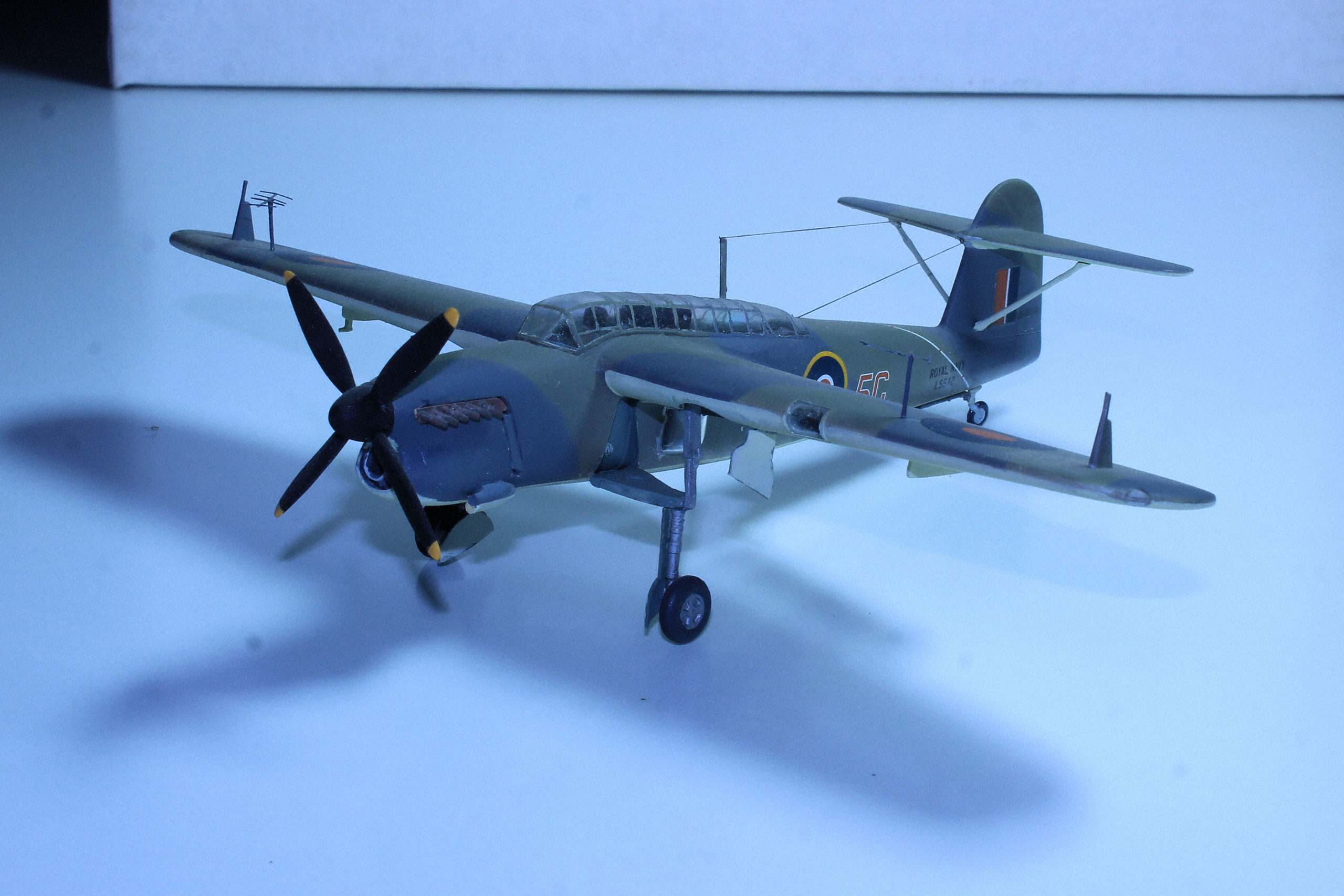Fairey Barracuda
The Fairey Barracuda was a British carrier-borne torpedo and dive bomber. It was the first aircraft of this type operated by the Royal Navy’s Fleet Air Arm to be fabricated entirely from metal.
The Barracuda was developed as a replacement for the Fairey Albacore biplanes. Development was protracted due to the original powerplant intended for the type, the Rolls-Royce Exe, being cancelled; it was replaced by the less powerful Rolls-Royce Merlin engine. On 7 December 1940 the first Fairey prototype conducted its maiden flight; early testing revealed it to be underpowered. However, the definitive Barracuda Mk II had a more powerful model of the Merlin engine, while later versions were powered by the larger and even more powerful Rolls-Royce Griffon engine. The type was ordered in bulk to equip the FAA; in addition to Fairey’s own production line, Barracudas were also built by Blackburn Aircraft, Boulton Paul, and Westland Aircraft.
The type participated in numerous carrier operations during the conflict, being deployed in the Atlantic Ocean, Mediterranean Sea, and the Pacific Ocean against the Germans, Italians, and Japanese respectively during the latter half of the war.
On 3 April 1944 a total of 42 aircraft dispatched from British carriers HMS Victorious and Furious scored 14 direct hits on the German battleship Tirpitz using a combination of 1,600 lb and 500 lb bombs for the loss of one bomber. This attack damaged Tirpitz, killing 122 of her crew and injuring 316, as well as disabling the ship for over two months. However, the slow speed of the Barracuda contributed to the failure of the subsequent Operation Mascot and Operation Goodwood attacks on Tirpitz during July and August of that year
In addition to the FAA, the Barracuda was also used by the Royal Air Force, the Royal Canadian Navy, the Dutch Naval Aviation Service and the French Air Force.
Fairey Barracuda Mk.II LS542 / 5C HMS Victorious April 1945 for Strikes on the German Battleship Tirpitz Scale Model by MPM 1/72 Scale.

Fairey Barracuda Mk.II LS542 / 5C HMS Victorious April 1955 Scale Model by MPM 1/72 Scale 
Fairey Barracuda Mk.II LS542 / 5C HMS Victorious April 1955 Scale Model by MPM 1/72 Scale 
Fairey Barracuda Mk.II LS542 / 5C HMS Victorious April 1955 Scale Model by MPM 1/72 Scale 
Fairey Barracuda Mk.II LS542 / 5C HMS Victorious April 1955 Scale Model by MPM 1/72 Scale 
Fairey Barracuda Mk.II LS542 / 5C HMS Victorious April 1955 Scale Model by MPM 1/72 Scale 
Fairey Barracuda Mk.II LS542 / 5C HMS Victorious April 1955 Scale Model by MPM 1/72 Scale 
Fairey Barracuda Mk.II LS542 / 5C HMS Victorious April 1955 Scale Model by MPM 1/72 Scale 
Fairey Barracuda Mk.II LS542 / 5C HMS Victorious April 1955 Scale Model by MPM 1/72 Scale 
Fairey Barracuda Mk.II Scale Model Box Art by MPM 1/72 Scale
